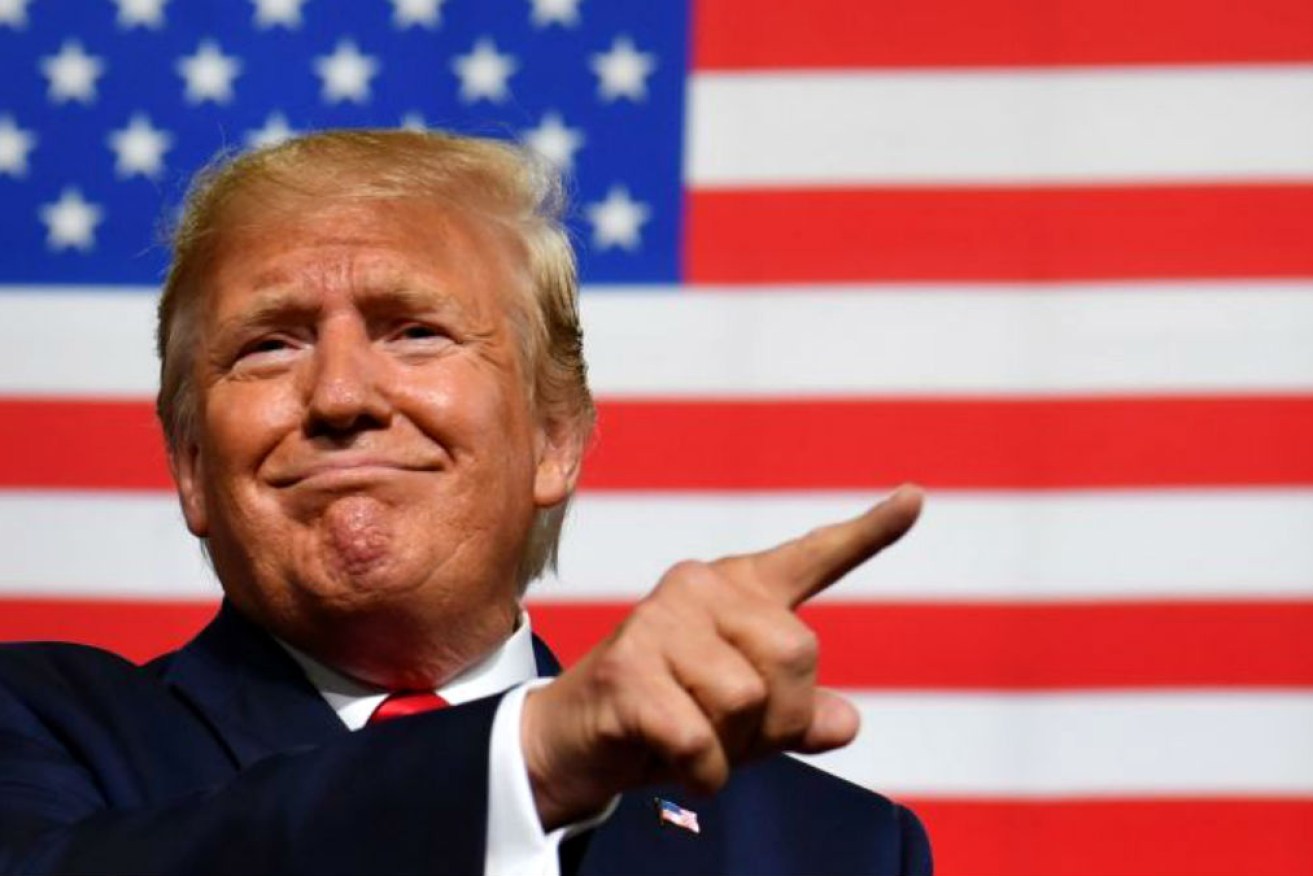Why Donald Trump wants ‘bonehead’ central bankers to introduce negative rates


Donald Trump wants the US central bank to implement policies usually saved as a last resort. Photo: Getty
Negative interest rates are traditionally a last resort for central banks on the ropes, but US President Donald Trump is leaning on the Federal Reserve to drop below zero willingly.
It’s a move that would save the property-mogul-cum-politician almost $US8 million a year ($11.65 million) according to modelling by Bloomberg.
But Mr Trump says average Americans will benefit too, claiming the current interest rate of 2.25 per cent is higher than it needs to be and lower rates would allow government to refinance its debts.
Tweet from @realDonaldTrump
“We have the great currency, power, and balance sheet… The USA should always be paying the the lowest rate,” he posted on Twitter.
“It is only the naïveté of Jay Powell and the Federal Reserve that doesn’t allow us to do what other countries are already doing. A once in a lifetime opportunity that we are missing because of ‘Boneheads’.”
US ‘long way’ from 0 per cent rates
For all Mr Trump’s enthusiasm, the likelihood of the Federal Reserve slashing rates to his preferred levels is almost impossible.
Speaking to The New Daily, BIS Oxford Economics chief economist Sarah Hunter said the United States’ economy is too healthy to consider unconventional and extreme measures like negative rates.
In fact, the US is further away from the ‘zero bound’ than Australia’s central bank.
Making such drastic cuts would also do nothing to support the central bank’s mandate – to maintain stable prices (through low inflation rates) and maintain the economic wellbeing of citizens.
Put simply, there’s no real reason for the central bank to cut other than to allow government to refinance its debt – which is Mr Trump’s goal.
Even then, while it would help Mr Trump’s administration manage its debts it could also destroy consumer confidence and subsequently cripple economic growth.
“The Federal Reserve wants stability – uncertainty is the worst thing that could happen,” Dr Hunter said.
“Cutting rates to 0 per cent could create a boom in property markets and construction, but it could also be taken as a sign of fear. On net, the cuts would probably be a bad thing.”
A sudden drop would also wreak havoc on Australia, inverting our exchange rate with the US with a knock-on effect to foreign exchange-related industries including our export market.
How do negative rates work?
Under a negative rate policy, financial institutions are required to pay interest for parking excess reserves with the central bank.
That way, central banks penalise financial institutions for holding on to cash in hope of prompting them to boost lending.
Advocates of negative rates also say they help weaken a country’s currency rate by making it a less attractive investment than that of other currencies.
A weaker currency gives a country’s export a competitive advantage and boosts inflation by pushing up import costs.
But negative rates put downward pressure on the entire yield curve and narrow the margin that financial institutions earn from lending.
If prolonged ultra-low rates hurt the health of financial institutions too much, they could hold off on lending and damage the economy.
– With AAP








